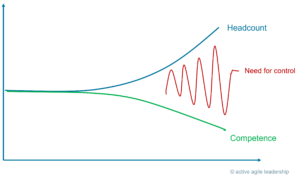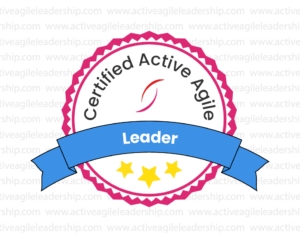Avoid the growth trap

When growing rapidly, building competence at a faster pace than your headcount is critical to building a high trust culture. A key ingredient is Leaders as Trainers.
Lead through others
Expect to lead people who have more detailed knowledge than you, who are strong headed in an environment which rapidly changes.
Fast decision cycles with a sense of urgency
Fast decision cycles are essential to stay ahead of the curve,
A leader should be skilled to lead in multiple scenarios
This includes leading change, building the environment/system that delivers results, leader as a coach and leading by example through self-leadership.


To get the Active Agile Leader certification through this program, three conditions need to be fulfilled:
A group of 5 to 10 people follow the program as one unit. The intent is that the team members can continue and peer-coach each other after the program.
The group self-selects and commits to, driving changes (improvements) during the program.
Members commit to reserving one day every 2 week. (A total of 5 days over 10 weeks).
Minimum attendance is 4 out of 5 sessions.
A group of 5 to 10 people follow the program as one unit. The intent is that the team members can continue and peer-coach each other after the program.
The group self-selects and commits to driving changes (improvements) during the program.
Members commit to reserving half a day every week for nine weeks. (A total of 9 half days over 10 weeks) .
Minimum attendance is 7 out of 9 sessions.
Leaders at all levels. This course aims to build everyday essential skills to lead free thinking people.
Basic Agile knowledge similar to CSM, Kanban or Leading SAFe.